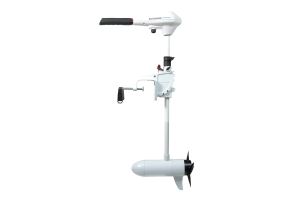Trolling engines are available in a range of sizes to meet the needs of different boats and sailing conditions. From 15 inches in length, short-shaft outboard motors are suitable for smaller craft, such as canoes and inflatables. The ship and most other sailboats need a long-shaft engine, while larger vessels, such as barges that require high thrust power, need an extra-long tree outside. You can also read our trolling motor battery buying guide to choose the best one for you.
Instructions
- Put the trolling motor on the ground.
- Identify the length of the trolling motor shaft. This one is on the opposite side of the bar. It extends from the top of the mounting bracket to the cavitation plate.
- Using a tape measure, measure the length of the trolling motor shaft. Note this in inches.
- Identify the transom of your boat, which is at the back. It includes the panels at the end of the ship that stays out of the water during operation.
- Use a dipstick to measure down on a vertical plane from the top center of the transom to the hull of the boat. This will give you an approximate length of the tree that is less than an inch. The ties are rarely vertical, so do not measure an inclined or inclined table. Just draw an imaginary vertical line from the transom.
- Use the approximate length of the shaft to determine the type of trolling motor you will need. If it is between 15 and 17 inches, choose a short shaft trolling motor or the best outboard motor. Boats from 18 to 21 inches require a long tree, and vessels up to 27 inches can use an extra long tree.
Tips and Warnings
- The length of the trolling motor shaft and crosshead length must match to ensure that the engine is at the correct height while operating in the water.
- Short trees are 15 to 19 inches long. Trees are 20 to 24 inches long. Extra long trees are 25 to 29 inches long and extra-long trees are 30 inches and more.

Comments are closed.